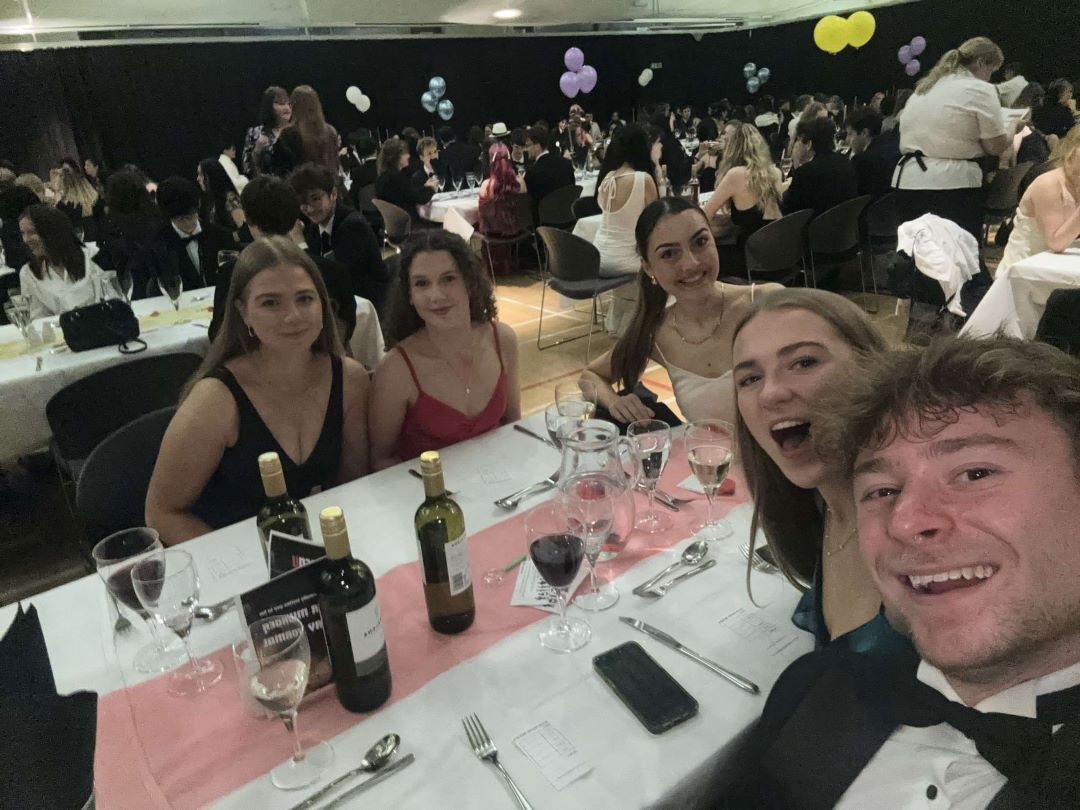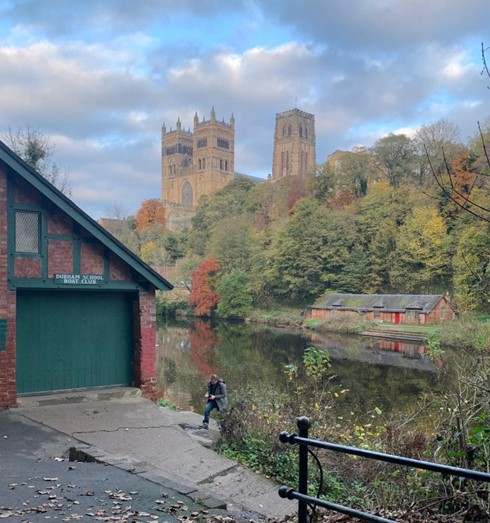What is the directorial vision for TDTC’s production of Into The Woods?
Into The Woods is a show based on much loved childhood fairy tale characters, teaching us to be kind to our childhood selves and to be careful what stories and messages we teach our children, which the show’s repeated sentiments, ‘children will listen’, ‘I wish’ and ‘no one is alone’ serve as a constant reminder of.
This underlying idea that your childhood and those who raise you forms your adult character is nothing new, in fact, a very simple, timeless concept, and one that transcends ‘character’. Therefore, my idea to multi-role this show was a way to create a transience of character in a way that doesn’t obstruct the shows message, and for some will invite new questions for the audience about the connections that bind these characters. I chose to use neutral base wear for all the actors, accented by characterised accessories to increase the ease of multi rolling, but also to present the troupe of 10 as performers, telling this moral story, as ‘blank-canvases’, covering all the parts, rather than creating a questionable suspension of disbelief that the characters double as each other. The show has cyclical moments at the beginning and the end where the actors appear in just their base costumes to set up/round up this as a concept.
My visual aesthetic for the show centres very much around childhood memory, so the main set piece is a child’s climbing frame, with a slide, sandpit, swings and towers, all of which are utilised as different buildings within the show. The decayed frame alongside the missing children posters around the set, encourage the audience to revisit the concept of ‘childhood memory’ in both its positive and negative lights, inviting them to engage more critically with the show’s message. Emily Phillips – Director.
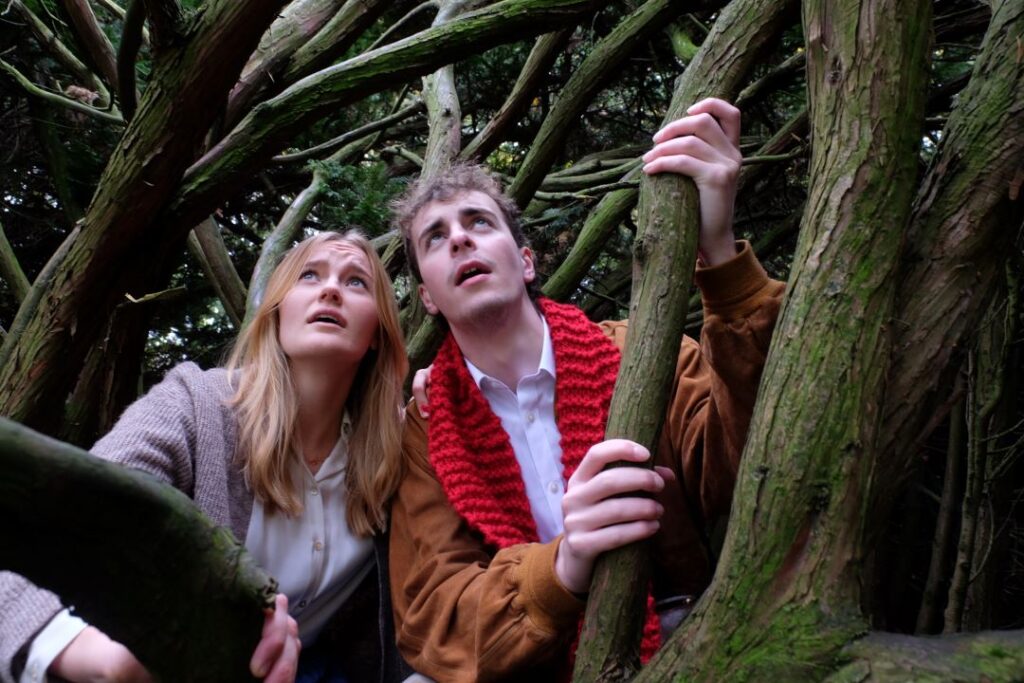
How have you found the process of Musical Directing one of Sondheim’s most difficult works?
It has been an experience for sure. Into the Woods has some of the best moments and songs in all Musical Theatre for me (Agony is a particular favourite), and I have had so much fun working through all those moments I had only heard in recordings. There is so much to unpack in the music thematically. I don’t know any other show that starts with a 15-minute musical number without any breaks, encompassing 4 different storylines. Sondheim reuses his themes constantly, and almost all those themes are based primarily on a 5-note descending theme, which he first uses to represent all things magical in the show. Vocally, it’s not an easy show to sing, especially because we are multi-rolling many of the characters in the show. The show contains moments which call for some classical training, something which most of the cast are not used to, but the cast has really risen to the challenge. Each character has a deep and complex history rooted in traditional fairy tales, but Lepine and Sondheim have expanded them in a nuanced and engaging way. Musical directing the evolution of these characters and seeing them develop through the process has been particularly uplifting as we get closer to the show. It has been a
pleasure working with such a talented cast and CPT, and I hope many of you come and enjoy the production. Max Wedmore – Vocal Musical Director.
How have you found ‘Into the Woods’ being your first show at Durham?
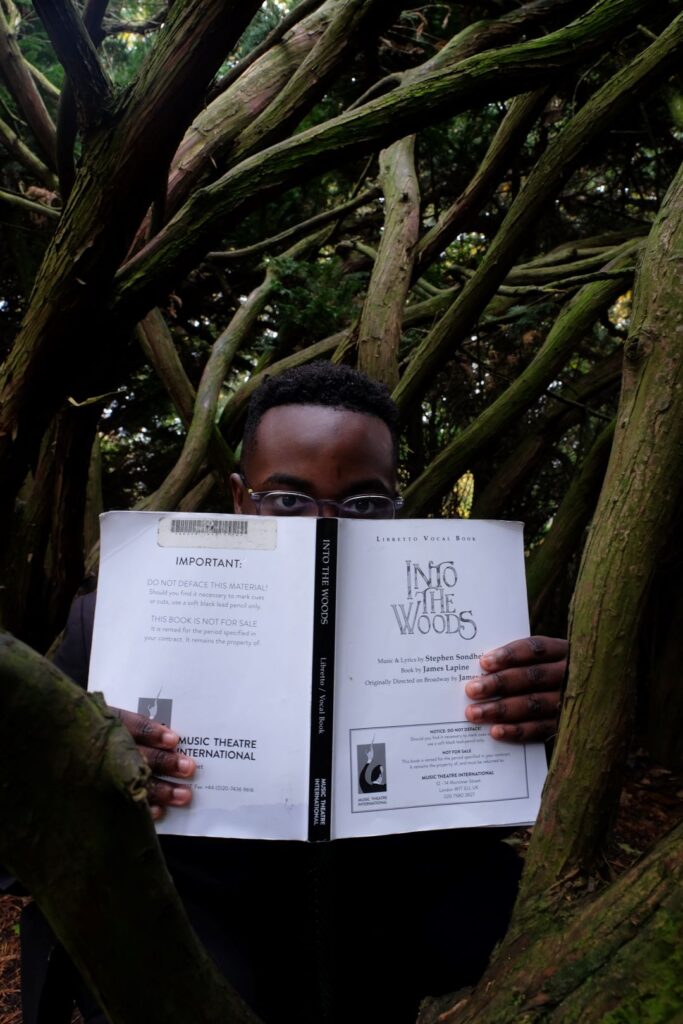
Into the Woods has been such a great experience. Everyone talks about the academic ‘jump’ from secondary school to university, but I think I’ve also experienced a jump in the standard of drama and musical theatre. Durham Student Theatre (DST) takes their productions so seriously and I love that. Coming from a place where there wasn’t such a high emphasis on drama, I’ve found it so refreshing and I’ve learnt so much. In almost all musicals I’ve done, dance and singing have been prioritised over acting but I feel like there’s been an equal balance in Into the Woods. I’ve felt really challenged and it’s taught me so much about multi-rolling and building a character from the ground up. I distinctly remember a character workshop we did early in the rehearsal process where we built our (many) characters’ vocal and physical attributes. I found this particularly useful for my character and I can definitely see myself using techniques I learnt then, for future roles.
I think what I’ve enjoyed the most about ‘Into the Woods’ is meeting and working with people as passionate as me. I remember being so nervous for callbacks, my voice was going because of freshers’ flu and I was terrified that I would mess up. The moment I stepped into the TLC, I felt so much calmer. It’s such a supportive environment. You’re surrounded by people who listen to the same music, have the
same dreams and prospects as you, and that’s something not too common in secondary school. Into the Woods will always have a place in my heart as my first musical in Durham. The place where I developed my acting skills and made friends to last for life. Midun Odunaiyda – Narrator/Mysterious Man
What do you think the multi-rolling element adds to the show?
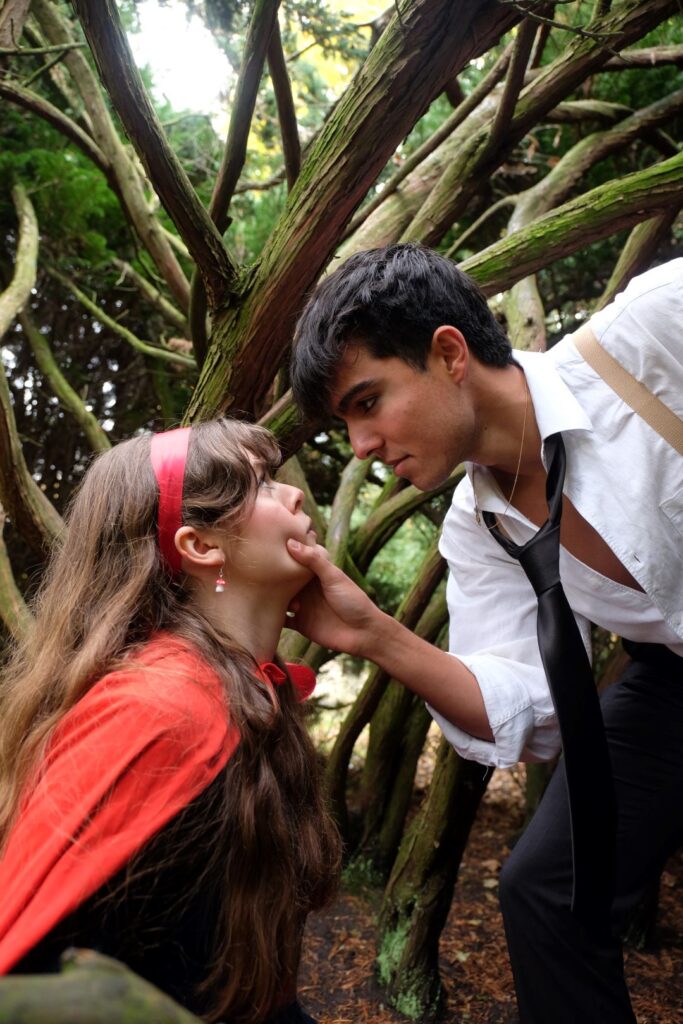
Ah, multi-rolling. It’s been the subject of a lot of debate. But why would someone choose to use it in a show like Into The Woods? Far from just being a theatre company’s niche, multi-rolling has existed for nearly a century as part of the Brechtian tradition of Epic Theatre. By making the actors multi-roll, they remind the audience that they were watching a play, so they could focus on the presentation of events and relate them to events in the real world. (Any of this sounding familiar to the victims of GCSE drama?)
So, how does this work in the show? Sondheim chose his show title carefully; his characters do not just go into the woods, but also into the woulds. If the Wolf and Prince Charming are played by the same actor (Charles Moscrop), the audience can draw links between the two men pursuing women who flee them. Perhaps Prince Charming would be the wolf in a different person’s story. If Rapunzel and Little Red Riding Hood have the same face, the audience can view them more as a representation of all children who are victims of their parents’ mistakes, whether they’ve been confined or let loose to wander.
Multi-rolling has also allowed us as a cast to add some comic relief to lighten some of the more gory aspects of the Grimms’ fairytales. Cinderella’s stepsisters are played by the same actors as the princes (Charles Moscrop and Joe Butler-Smith), Granny is played by the same actor as Cinderella (Isabel Askew). In short, I truly believe that multi-rolling this musical has allowed us to make it more entertaining, but also more meaningful, asking the contemporary audience what connections they can draw between characters and what lessons they can take with them into the real world. Charlie Holliday – Little Red Riding Hood/ Rapunzel
Discover more
Into the Woods is taking place at the Sir Thomas Allen Assembly Rooms Theatre from 6 – 9 December with a matinee performance on the Saturday 9 December.
Get your tickets here.
Learn more about Durham Student Theatre.

Eleanor Sumner
My name is Eleanor Sumner and I am a third year English Literature student from University College. Producing 'Into The Woods' has been a fantastic experience and I cannot wait for everyone to see the show!


